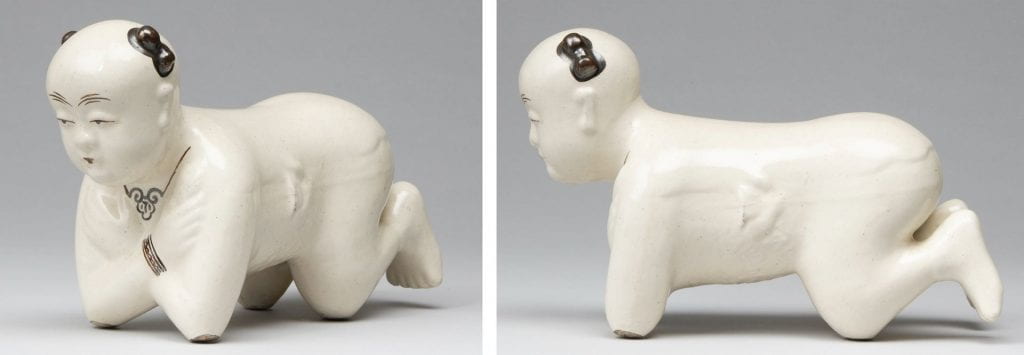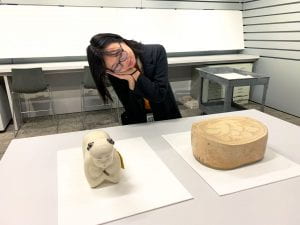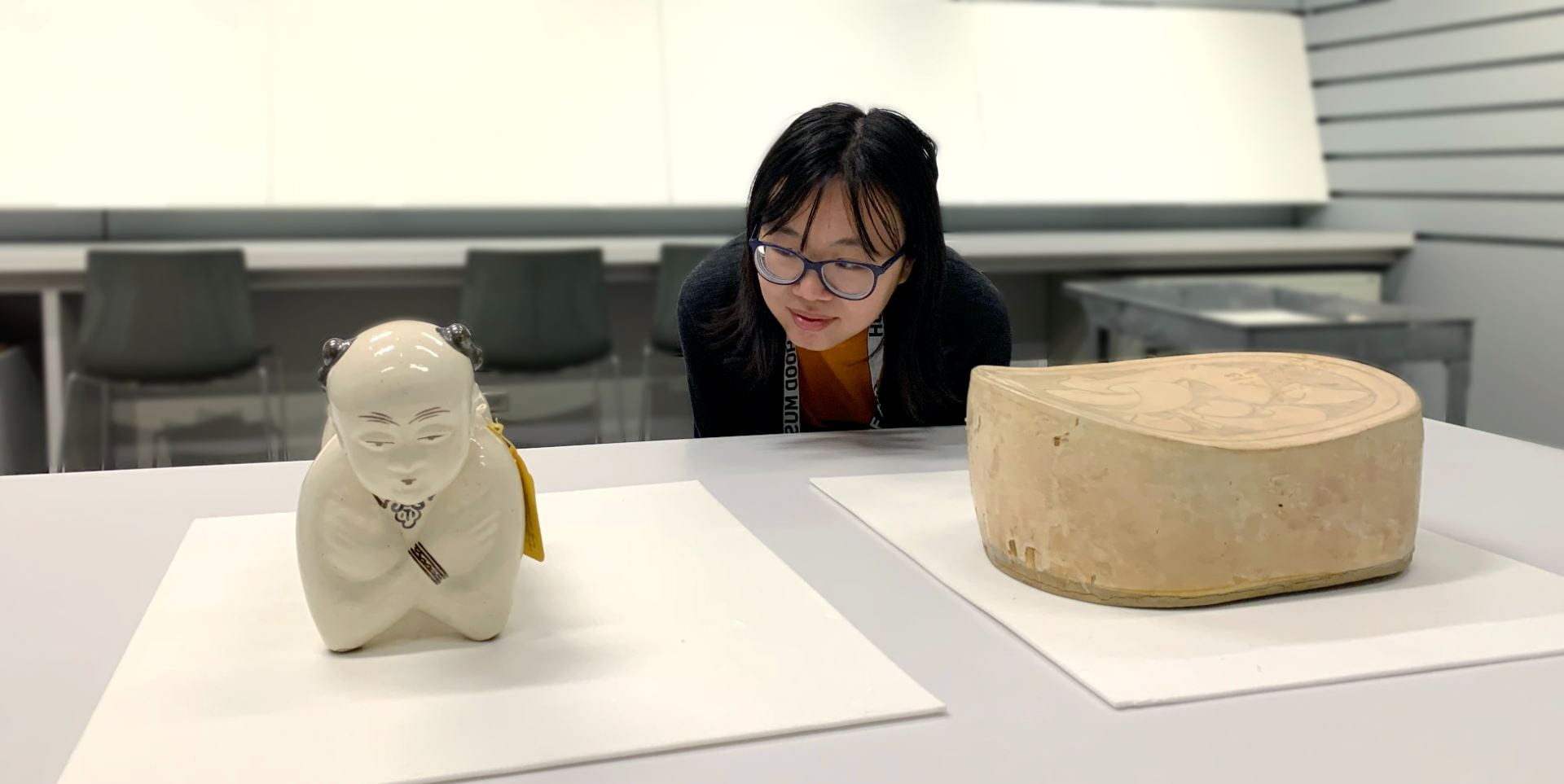Recently, while going through art handling training (AKA becoming official art touchers), I found that there are a couple of Chinese ceramic pillows in the Hood Museum’s collection.
For those not familiar with ceramic pillows, I can imagine how it might be difficult for people to wrap their heads around how a ceramic pillow is even possible. In our current lives, where we all use soft pillows, it seems like ceramic pillows follow some impossible logic. But take a moment to think about how materials are made, specifically during a time when everything was handmade. Fabric manufacturing, while both commonly accessible and much cheaper to purchase these days, used to be a very time-consuming process and thus an expensive commodity.

Most fabrics are made by collecting some sort of fiber (for example, from animal fur or plants like cotton) and then brushing, stretching, and spinning a group of fibers into a fine thread. Then those threads are woven together. Thousands of threads are essentially tied into interconnecting knots, which becomes a fabric. It wasn’t that long ago that knowledge and access to specific natural fibers and fabrics totally defined trade. The “Silk Road” got its name for a reason! These ceramic pillows come from a time when ready access to multiple fabrics was very much a luxury for those with wealth and status.
On the other hand, there’s ceramic. Why would one waste such a precious commodity on something that is used for rest? Or for only portions of the day? Whereas clothes need to be made from fabric and are a daily necessity across classes, pillows and the ability to leisure with an accessory are not. Ceramic is also easier to clean and retains temperature well –– think of your coffee mug or bathtub. Unlike fabric, which retains only warmth, ceramic can also retain cool temperatures, making it useful during hot summers in a pre-air-conditioned world.

It’s also important to note that, while ceramic is faster and cheaper to fabricate than a bolt of textile, ceramic pillows were still used by those in the merchant middle class. They were not everyday objects for the average individual. Pillows used by the lower classes were most commonly woven from plant fibers, like dried bamboo leaves, and filled with scraps of plant husks, grain shells, or hay.
People who didn’t have ceramic pillows still followed the logic that a pillow needed to be stiff for head support, and over time this practice informed a different cultural preference. My own grandparents, going the extra mile beyond simply a “firm mattress,” slept on a wooden bed with only a woven reed cover atop it. They always spoke of how doing so was what they felt was most comfortable. In other parts of East Asia, we see a similar logic and preference for sleeping, for example, in Japan it is common to sleep on futon mattresses atop tatami mats.

Happening across these pillows in art storage gave me space to reflect on how objects bear witness to the depths of culture. Even something as mundane as a pillow might not be as universal as we think. Cultural heritage objects cover the scope of every aspect of life. Seeing and handling these works reminded me of how these histories have lineage to practices and attitudes that people hold even today. It was also quite special to have the opportunity to be in such close proximity with objects that informed ways my own family lives. Spending time with these objects reminds me how even the simple act of sleep connects me to my elders, a generation or a thousand years before me, conveyed by a pillow that carries a word we can still read today — a small message to endure.
This post was authored by:
Jayde Xu, Hood Museum Board of Advisors Mutual Learning Fellow

ABOUT THE AUTHOR
Jayde Xu is the Mutual Learning Fellow for Education and Public Programming. Formally trained as a visual artist, Jayde graduated from the Maryland Institute College of Art with a BFA in illustration and humanistic studies. Her studio practice focuses on mixed media and intersections of drawing and language. Most recently Jayde worked in visitor experience at Glenstone museum, with former intern projects at the Young Readers Center in the Library of Congress and the Globe Collection and Press.

Comments are closed.